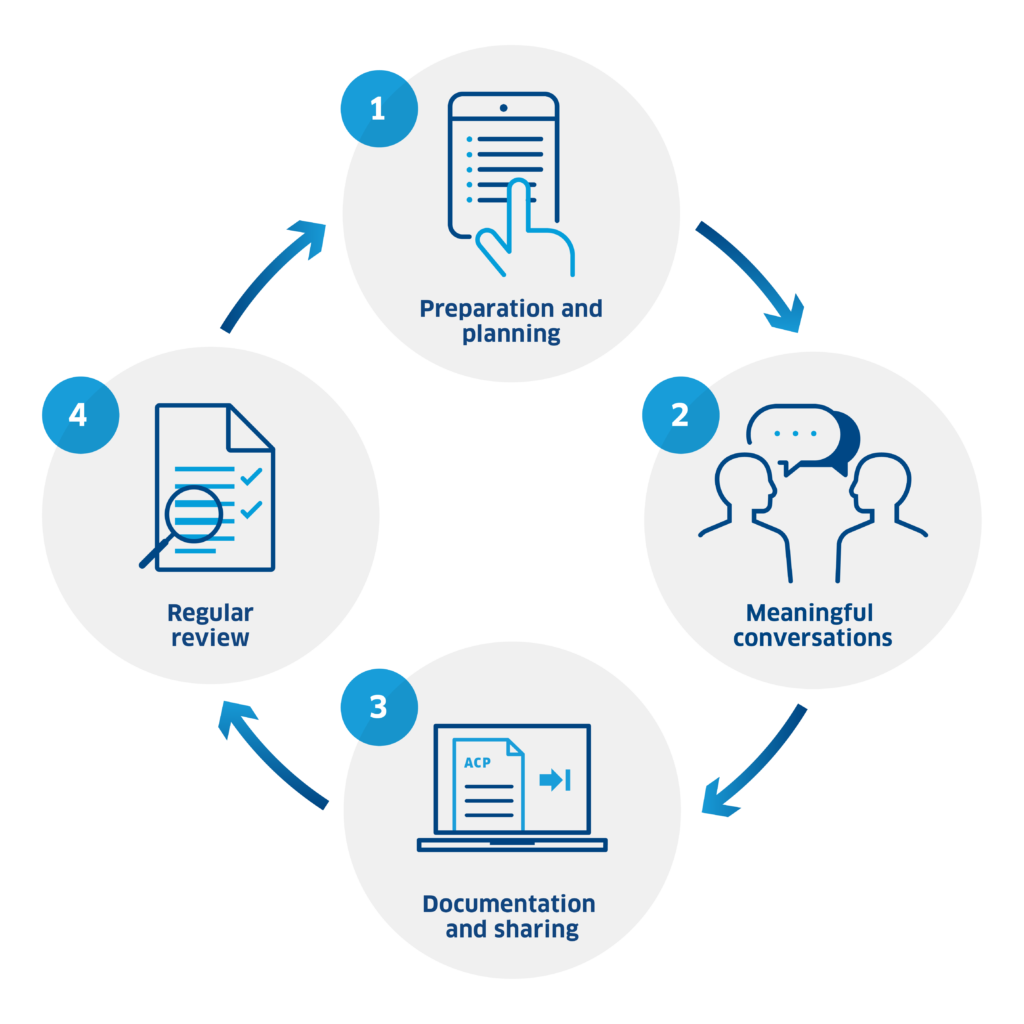
Why use SPICT™?
SPICT™ is a clinical tool used by health and care staff in the UK and around the world. SPICT™ helps identify people with general indicators of poor or declining health and clinical signs of worsening health conditions or a serious illness. SPICT™ looks for changes in health, increasing burden of illness, and more care and support needs.
Many people are still identified too late. This happens more often if they have worsening organ function, multiple health conditions (multimorbidity) or increasing frailty in older age. People with a single or main serious illness often have disease-focused care.
Identifying more people earlier let’s us offer them a whole person assessment (symptoms, mental health problems, family, social or financial and spiritual issues) and ask about what matters to them. Then more people, their families and carers can get the help and support they need to live well with declining health through timely palliative care and future care planning long before they are nearing death.
SPICT™ 2023 is available in many languages, and as e-SPICT™.
SPICT-LIS™ is adapted for lower-income countries/settings.
SPICT-4ALL™ 2023 is in lay language suitable for care workers, patients and families.
SPICT-4ALL™ in Prisons is our latest version.
SPICT™ is designed for adults but we are keen to develop one for children – contact us if you are interested.
Ways to use SPICT™
- SPICT™ has 6 general indicators of deteriorating health and increasing care needs, including trigger events (e.g. hospital or care home admission).
- SPICT™ includes clinical indicators of health conditions that are getting worse.
- Use these to help decide if this person needs a review and to have a conversation about what matters to them (see: Using SPICT™ 2023)
- SPICT™ also outlines six core aspects of palliative care and future care planning.
Use the REDMAP framework and resources to guide conversations about care planning.
Other tools used with SPICT™
- Functional decline
(e.g. Australia-modified Karnofsky Performance Scale) [Reference]. - Stage of illness
(e.g. Palliative Care Phase Tool) [Palliative Care Outcomes Collaboration] - Patient-reported outcome measures of multidimensional needs
(e.g. IPOS) - Frailty tools for older people
(e.g. Clinical Frailty Scale, Electronic Frailty Index)
Prognosis for an individual patient is variable and uncertain. Timely identification without ‘prognostic delay’ matters.
In situations where access to palliative care depends on estimating life expectancy, cohort research based on 2 or more SPICT™ general indicators gives a population risk of dying within 12 months. (Publications)
(Recent reviews do not recommend use of the Surprise Question (SQ); Double Surprise Question (DSQ) alone to identify people for palliative care and care planning.)
Key steps in future care planning
Healthcare Improvement Scotland (ihub) – future care planning
Preparation & planning
(Identify who needs care planning – prepare ourselves as health and care staff, and make sure the person and those close to them are ready too.)Meaningful conversations
(Use REDMAP. Find out ‘what matters’ and ‘who matters’ to the person and people close to them.)Documentation & sharing
(Record and share care plans so everyone knows what to think about if the person’s health and/or situation change.)Regular review
(Care plans are updated as the person’s situation or preferences change.)

Used with permission from Healthcare Improvement Scotland, Improvement Hub.
Future Care Planning Toolkit, 2023
Benefits of using SPICT™
- Offers people opportunities to talk about their health declining and ‘what matters’ to them including things they hope to do, would like to happen, or wish to avoid.
- Gives priority to maintaining a person’s quality of life, and involving the people who are close to them.
- Ensures that any available disease-modifying treatments of benefit are combined with good symptom control and other aspects of palliative care.
- Reduces the risk of complex treatment and care decisions in a ‘crisis’ by making emergency care plans for acute illness or complications (including for family caregiver changes).
- Encourages people to appoint a proxy decision-maker (Power of Attorney) and/or make ‘advance decisions’ about any treatments they do not want in the future.
- Improves communication, continuity of care, current and future care planning; and multi-disciplinary team work.
- Includes family members and other carers so they receive the help and support they need.
